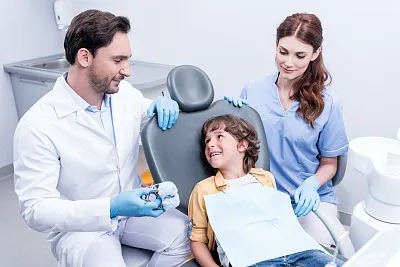The Essential Guide to Extracting a Tooth Safely and Effectively for Dental Health
Summary: Extracting a tooth can be a daunting experience, but it is sometimes necessary for optimal dental health. This guide provides essential insights on safely and effectively carrying out a tooth extraction. It emphasizes the importance of proper evaluation to determine if an extraction is needed, the various techniques employed to ensure a safe procedure, post-extraction care to promote healing, and the significance of professional dental assistance. Through careful planning and execution, tooth extraction can be a straightforward process that leads to better dental health and overall well-being.
1. Assessing the Need for Tooth Extraction

The first step in any tooth extraction process is determining whether the tooth really needs to be removed. Various factors contribute to this decision, including the level of decay, damage from injury, or overcrowding of teeth. Dentists typically conduct a thorough examination, often using X-rays to assess the condition of the tooth and surrounding structures.
Symptoms such as severe pain, swelling, or gum disease are critical indicators. Understanding the underlying issues will inform both the patient and the dentist about potential treatments or the necessity for extraction.
In some cases, patients might consider extraction if they are planning orthodontic treatments. This strategic approach can create more space in the mouth and improve tooth alignment, demonstrating that not all extractions are solely due to pathological reasons.
2. Techniques for Safe Extraction
Once the decision is made to proceed with a tooth extraction, the method employed is crucial for minimizing discomfort and ensuring patient safety. Modern dentistry offers several techniques, which can largely be categorized into simple and surgical extractions. Simple extractions are typically performed on visible teeth that are easily accessible, while surgical extractions are necessary for teeth that are still under the gum line or impacted.
Regardless of the chosen technique, anesthesia plays a key role in ensuring the extraction process is painless. Local anesthesia is commonly used for simple extractions, whereas general anesthesia might be indicated in surgical cases. Dentists also utilize various tools, such as forceps, to gently remove the tooth without causing unnecessary trauma to the surrounding tissues.
Preparation for the extraction is also vital. Appropriate sterilization of instruments and a clean environment can significantly reduce the risk of infection, making the process safer for both the patient and the healthcare provider.
3. Post-Extraction Care and Recovery
After a tooth extraction, proper aftercare is paramount to ensure healing and prevent complications. Patients are usually advised to bite down on gauze for 30 to 45 minutes post-extraction to help control bleeding. Keeping the area clean is essential; however, one should avoid rinsing their mouth vigorously for the first 24 hours to allow blood clots to form and healing to commence.
Pain management is another critical aspect of recovery. Dentists often prescribe or recommend over-the-counter medications to help manage any discomfort. Patients should also be advised to avoid strenuous activities for a few days post-extraction to prevent unnecessary swelling or bleeding.
Diet also plays a fundamental role in recovery. Soft foods, such as yogurt, mashed potatoes, and smoothies, are usually recommended initially, while harder foods can be gradually introduced as healing progresses.
4. The Importance of Professional Dental Care
While some individuals might consider performing a tooth extraction themselves, it is crucial to understand the risks associated with this approach. Professional dental care not only ensures that the extraction is performed safely and effectively, but also provides a thorough assessment of the oral health. It minimizes the risk of complications such as infection or damage to adjacent teeth.
Regular dental check-ups are essential for maintaining overall oral health. Dentists can proactively identify potential issues and recommend timely interventions, which might even allow for alternatives to extraction in some scenarios.
Furthermore, professional follow-up care after tooth extraction can lead to a faster recovery and improved long-term dental health. Dentists can monitor the healing process and address any concerns that arise during recovery, ensuring patients return to optimal dental function without complications.
Summary:
The process of tooth extraction is complex and requires careful consideration at every stage, from assessing the necessity for extraction to ensuring safe execution and proper aftercare. Professional dental care emerges as a non-negotiable element in this journey, bringing a wealth of expertise that safeguards patient health.
This holistic approach reduces the risk of complications and facilitates effective recovery, affirming the importance of maintaining regular dental visits for overall wellbeing.
This article is compiled by Vickong Dental and the content is for reference only.



